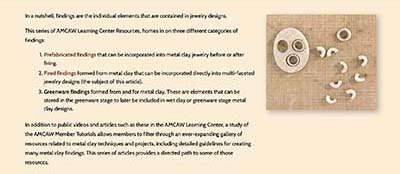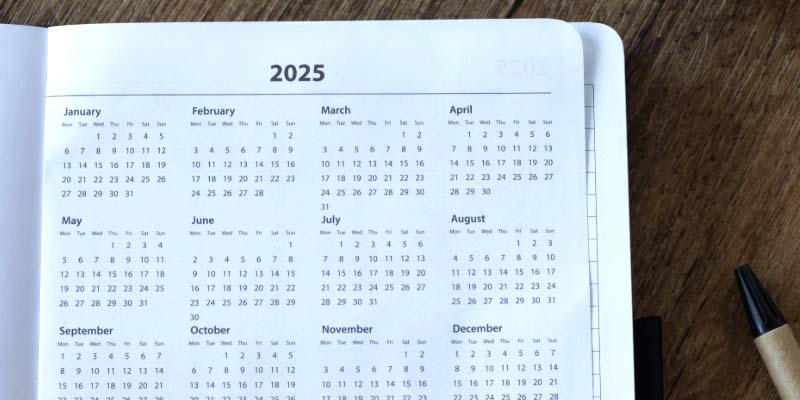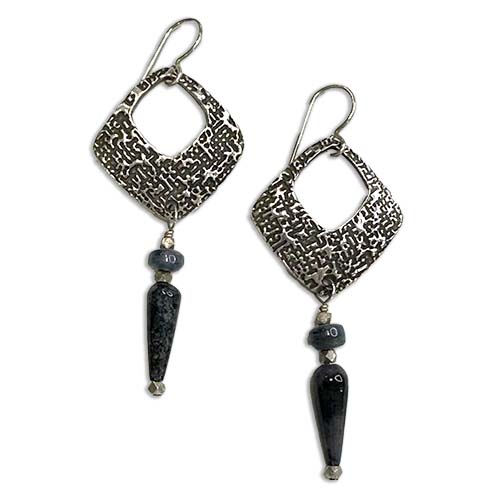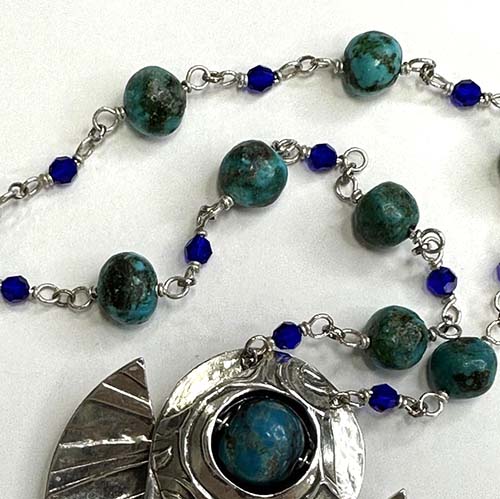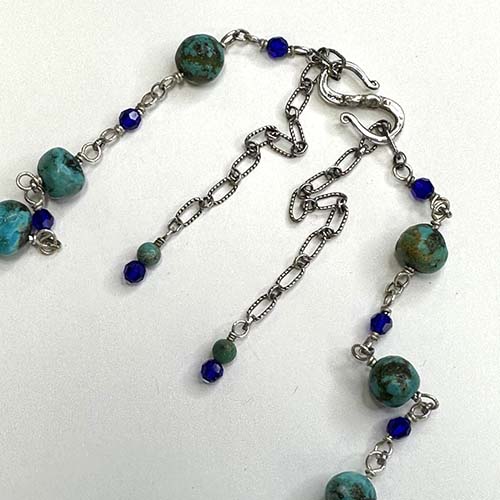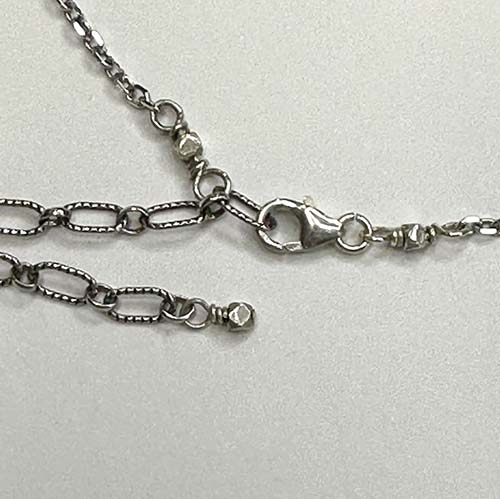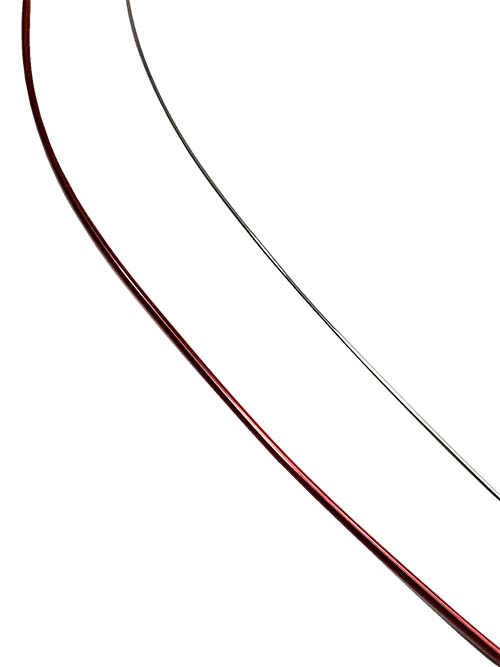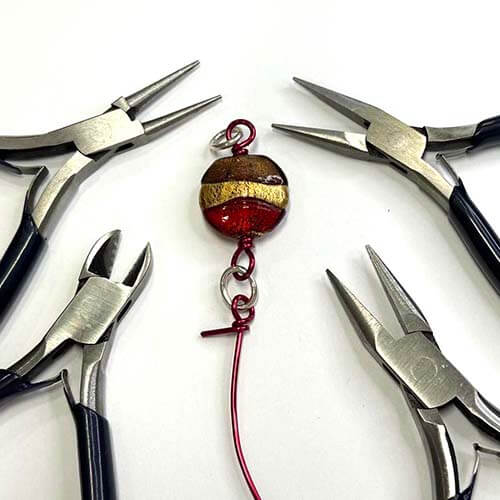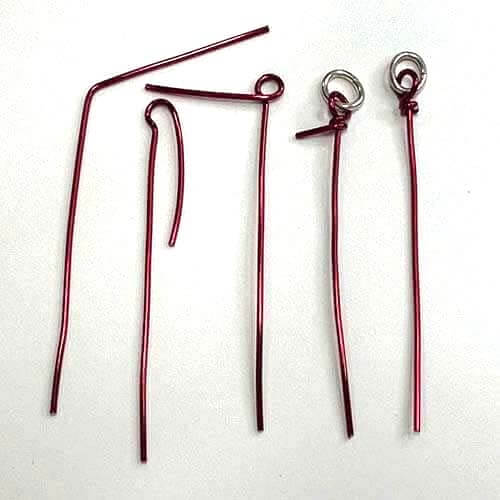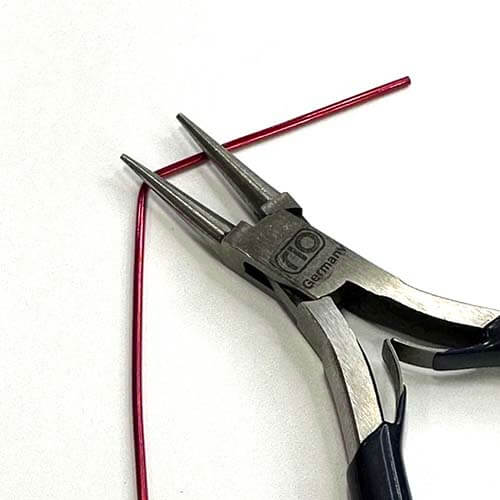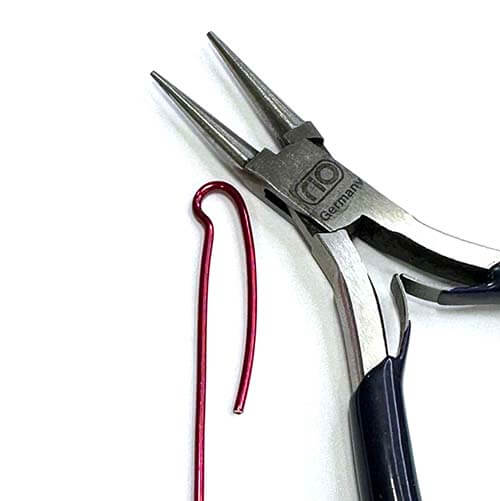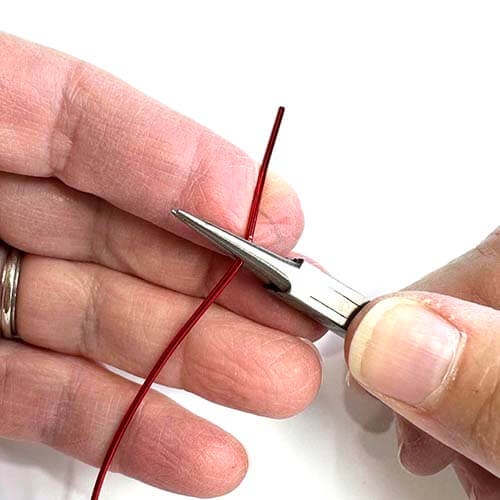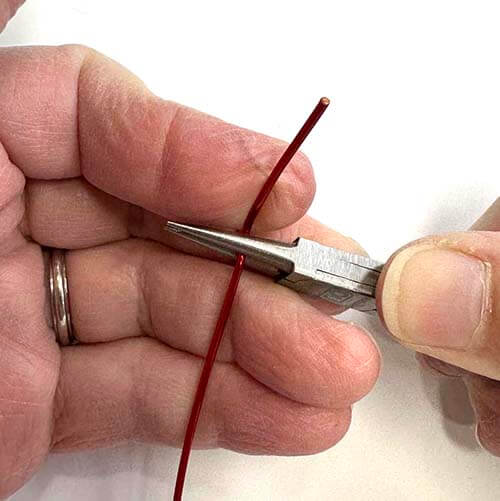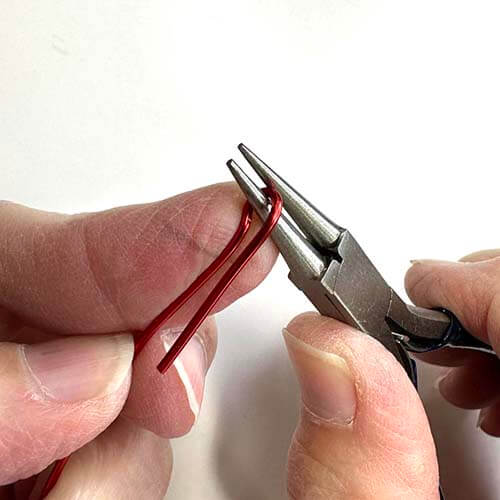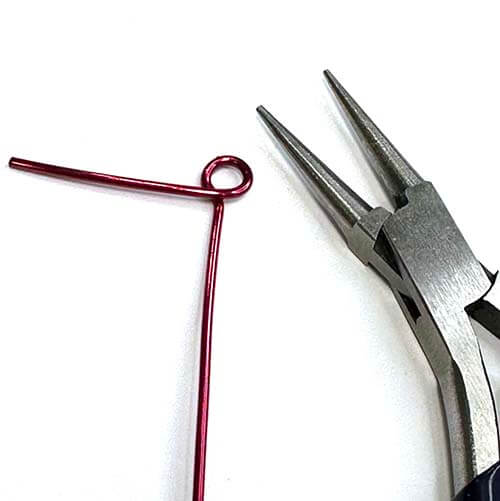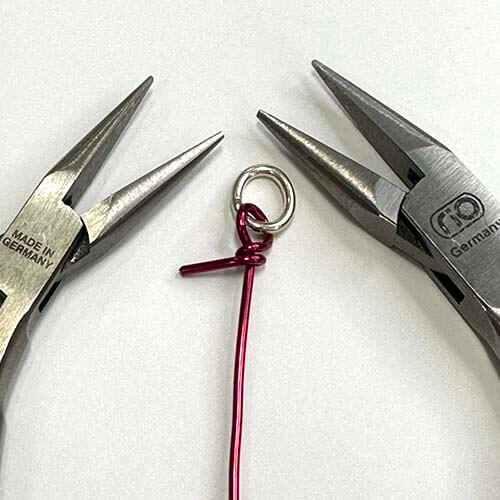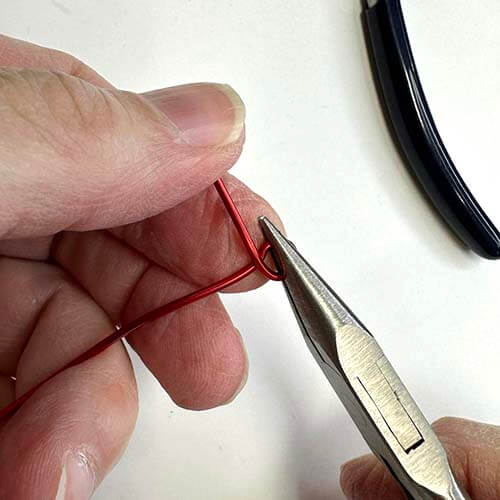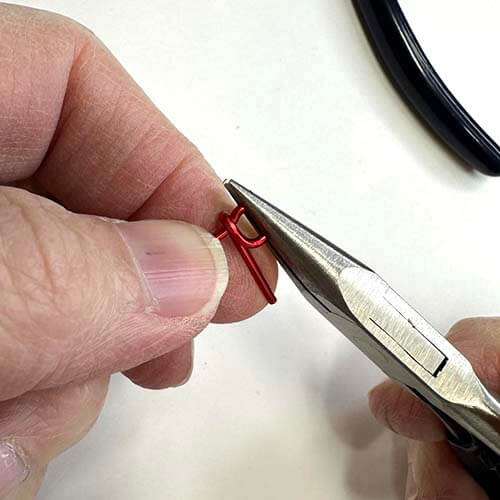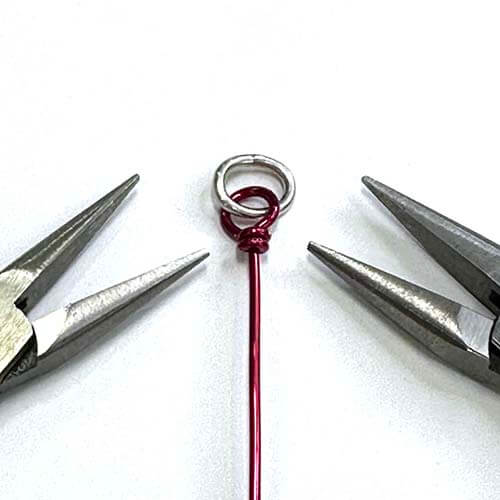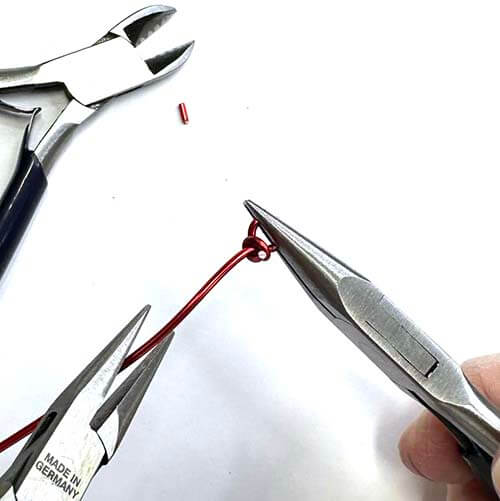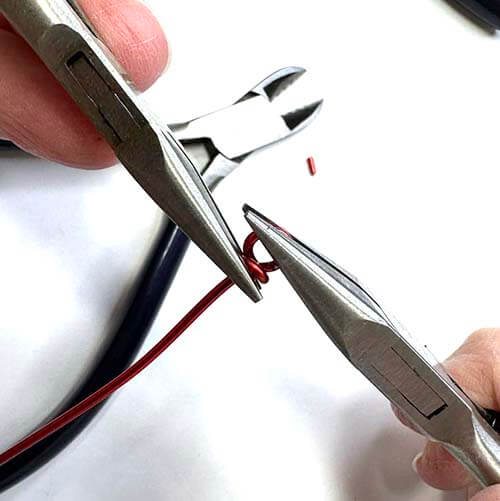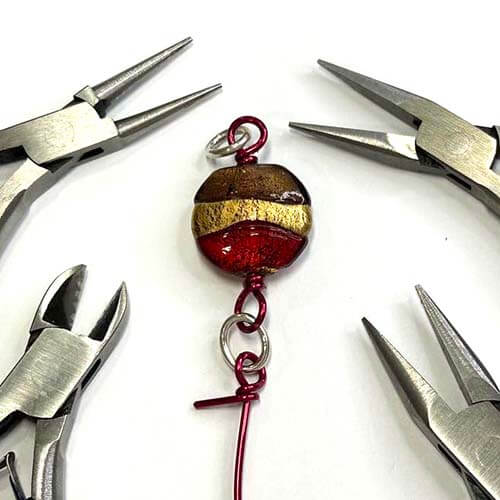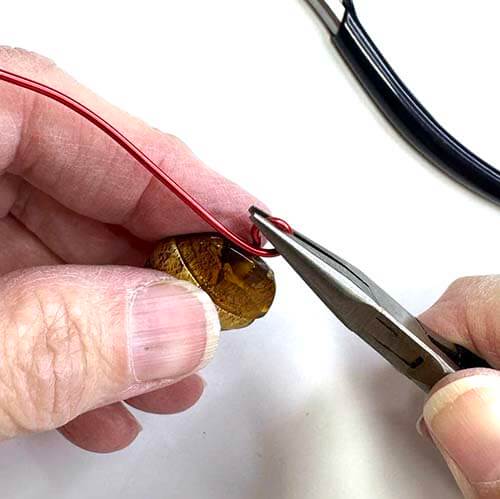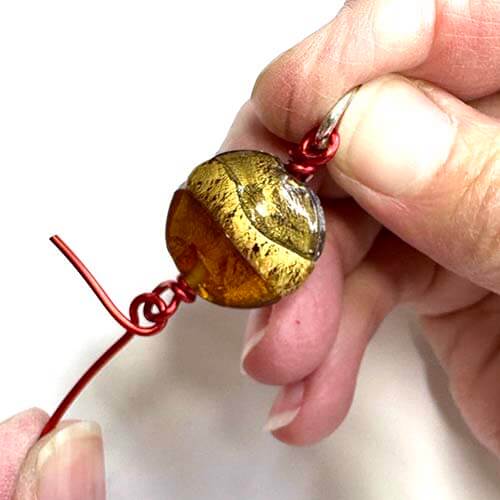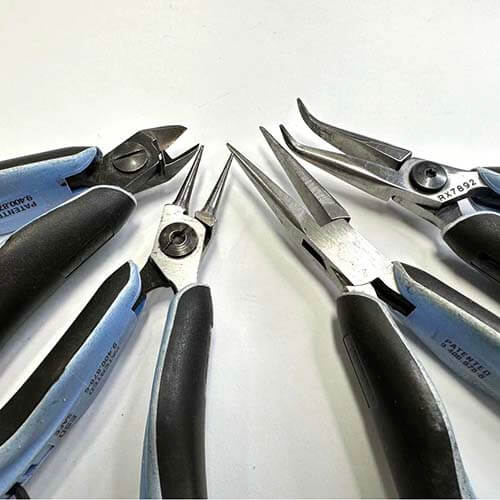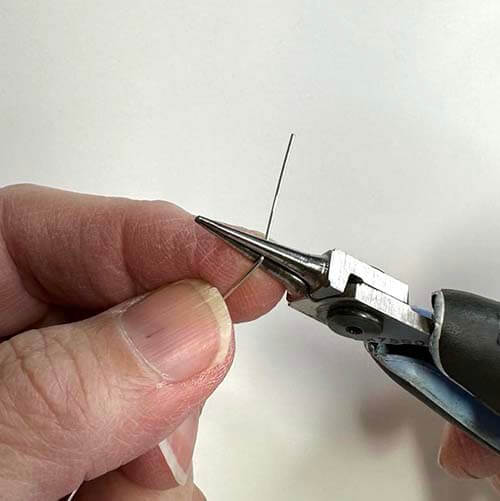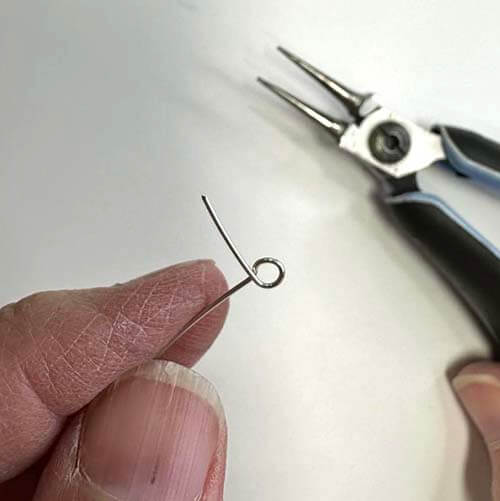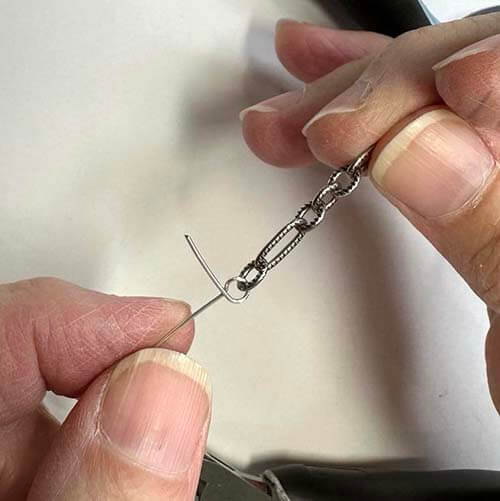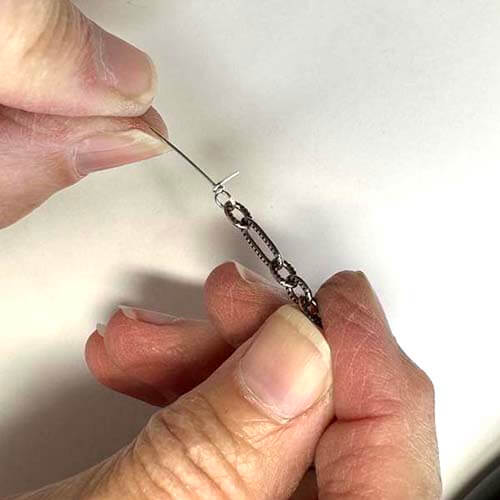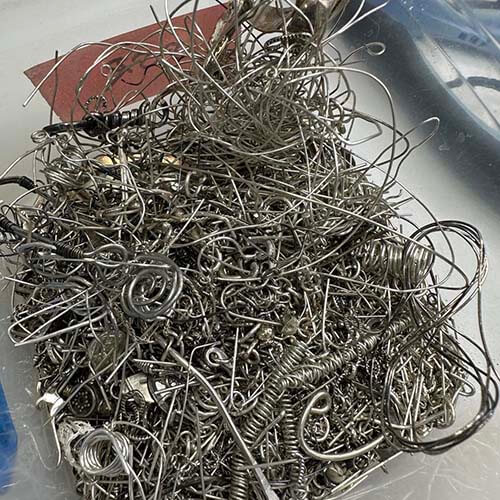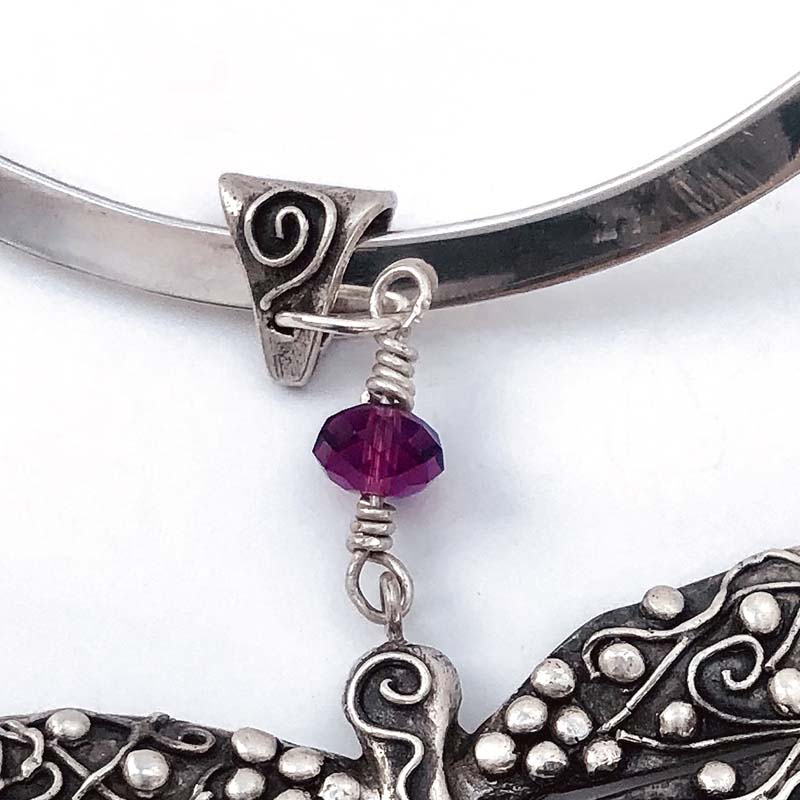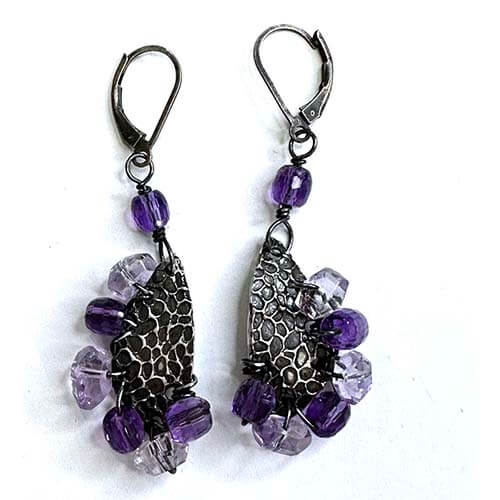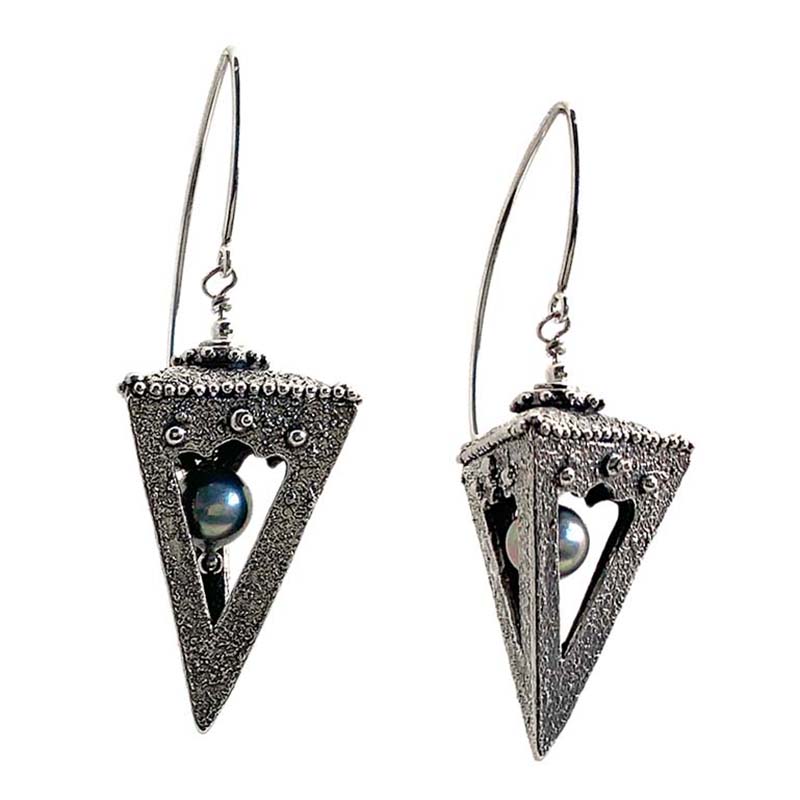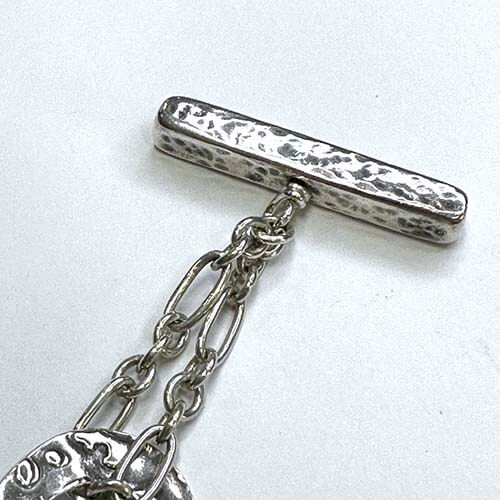Step 3 – Popsicle – The goal of this step is to pull the short end of the wire across the front of the long end, right at the base of the loop, creating the front of the wire-wrapped link. The loop should resemble a round popsicle on a long stick. The long end of the wire should protrude cleanly below the wire. And the short end of the wire should create a 90° angle with the long end of the wire, right at the base of the loop.
- In the last step of Shepherd’s Hook section, the round-nosed plier was held stationary, and the wire was moved with the free index finger. At that point, the bottom of the plier is blocking the wire from freely moving along the bottom of the loop. So, roll the round nosed plier up so that the index finger of the free hand can continue to tightly roll the wire around the bottom of the loop.
- Pay close attention to the position of the plier in the second picture here. The bottom of the plier is still in the loop. The top of the plier is above the loop, freeing up access to the bottom of the loop.
- Use the free index finger to roll the wire along the bottom of the loop and across the front of the long stem. The short stem should complete the circle of the lollipop. The extra wire at the end of the short stem should be at a 90° angle to the long stem.
Really Important – If the loop is intended to attach to a closed-loop component at this point, such as a soldered jump ring, a length of chain, a closed earring finding, a charm, or a pendant, now is the time to attach the component. Many times, the component can be added by snapping it in through the still-open loop. Sometimes, if the loop is too snug or the element to be added is somewhat large, the loop may need to be opened up slightly. Use a chain nosed plier to do this, much in the same manner as opening a jump ring, then tighten the loop back down.
Once the loop is wrapped, the only way to attach a closed-loop component is with an open-looped component, such as an open jump ring. This is not a disaster, but using open connections in a wire-wrapped piece defeats the purpose of adding strength by using a wire-wrapped loop.

